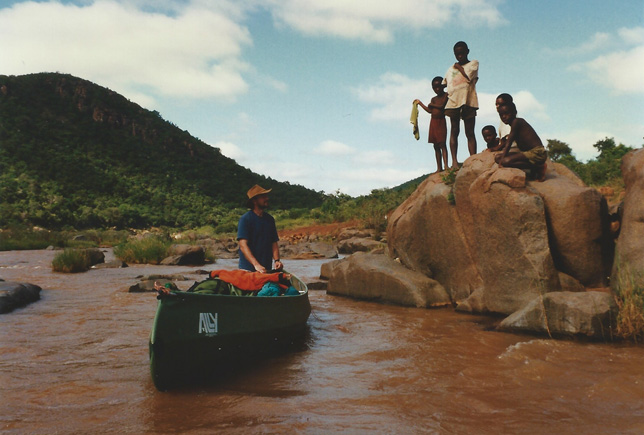I have an Ally 16.5 DR (since 1997), and cannot praise it enough. I have used and abused it extensively for all those years and it is still going strong. Some might think that it cannot cope with extreme canoeing and wilderness use, due to the rubberised cloth used as covering. I guess those people have their impressions from pictures, and have never seen an Ally canoe in real life, or at least never been paddling one. I was myself quite sceptic before I got my own Ally canoe, but was convinced after the first paddle I ever did in it (a 150 km trip from the Hardangervidda down to the sea).
The rubberised “canvas” cover is made of synthetic fibre, and reinforced with fiberglass strands as well. I have seen the manufacturer demonstrate the strength of the fabric by stabbing a hole with a sharp knife (yes that makes a hole…), but the hole would not tear any further – even when two strong men from the crowd of spectators was called to tear it apart between them.
I have never experienced any holes even after use in extremely rocky white water rivers - except for 3 small pin holes in the side due to abrasive storage over extended time (a BIG storage barrel on a 4 week long canoe trip). That never caused any concern, and was easy covered up with gaffa tape.
My canoe has been paddled in some hairy white water and dragged over sand, sharp abrasive rocks and through very thick thorny acacia and jesse bush. The first really hard abuse it got was during a 7 week long expedition in Africa, and later on shorter expeditions to the same continent – as well as the normal use and abuse here in Norway and trips to Sweden every year.
I prefer to store the canoe ready for use, but if you are short on space it easily packs up for storage in the basement or any other place. It is easy to transport on public transport – I have travelled by train and bus, as well as on planes to Africa on several occasions (oh well…you might have to pay for overweight luggage, unless you can split it on several people…).
The Ally canoe is somewhat slower to paddle on flat water when compared to more rigid and very light canoe constructions of carbon/Kevlar/gimmewhathightecmaterial. But it excels in white water and rapids due to the flexible construction which adjusts and flexes in contact with waves, current and stones – much as the construction of the old Viking longships which were also flexible.
All in all I would recommend the Ally canoe above any other canoe for wilderness and expedition use, as it is easy to repair as well.


 I'd be interested!
I'd be interested!